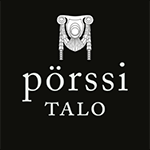Pörssitalo’s history
Pörssitalo, constructed in 1912 in Helsinki’s Kluuvi district, in a block known as Yksisarvinen or Unicorn, has a long and colourful history. Over the years, this handsome stone castle has borne witness to many significant events in Finnish history and acted as the setting for many developments in the country’s business and restaurant sectors.
A stock exchange was first established in Finland in the 1860s. Initially, the trading was sporadic and took place in a number of different venues. Prior to securing its own premises, the stock exchange meetings were held at the House of Nobility and at the Kleineh Hotel, based at in the east wing of the present day Helsinki City Hall.
In 1907, Helsinki merchants Julius Tallberg and Viktor Ek along with a few other local businessmen, acquired land on Fabianinkatu in central Helsinki for the purposes of building a stock exchange there. The architect Lars Sonck was appointed to design the new building. The building is widely considered to be one of his most successful designs and counts among one of the most impressive examples of 20th century Finnish Art Nouveau architecture.
In addition to the members-only Pörssiklubi, the building has traditionally always featured other restaurants as well. Grand Restaurant Börs opened its doors here in the building’s first year, soon gaining the Finnish nickname Pörssi. Over the years, Pörssi served as the venue for hundreds of celebrations and special occasions, the historically most fascinating and significant of which will have been the welcome party held there to mark the return of Finnish statesman P.E. Svinhufvud from exile in Siberia on the eve of Finland’s independence in 1917.
Grand Restaurant Börs was one of the Finnish capital’s most distinguished eateries, and also hosted cabarets, concerts and other performances. It came to be known as the favoured haunt among the city’s celebrities and upper classes. After 1917, kcabarets and other artistic amusements became unviable due to the prohibition and the high tax levied on entertainment. In the 1920s, however, the city’s bar scene came back to life again.
Entertaining royalty
In 1925, Helsinki was all a-flutter over the impending state visit by Sweden’s King Gustaf V. Hosted by the President Lauri Kristian Relander, it was the most important event to take place in the country for some time and a grand ball in honour of the distinguished visitors was naturally held in Pörssi. Helsinki’s high society ladies had new dresses created at the city’s finest ateliers or even imported from abroad for the occasion. The event was a huge sell out success, with sophisticated fine dining and dancing that went on until three in the morning.
Grand Restaurant Börs continued to operate until 1938, jwhen it was re-launched under the name of Adlon following a change of management. Adlon continue to maintain its predecessor’s reputation as one of the finest dining and entertainment establishments in Helsinki. Adlon was also a popular setting for films, hosting many crews throughout the 1930s, 1940s and 1950s. The Jussi gala, the Finnish Oscars, was held there 27 times. In 1973, Marlon Brando was presented with the title of Best International Male Actor, which the legendary thespian chose to accept in absentia.
Some of the most high-profile events to take place at Adlon were the theatrical balls, held there for 35 years. The tickets for the annual event, which always took place on the second Saturday of January, were hotly fought over. The line up at these events was always second to none, with performers including legendary Finnish opera stars Karita Mattila and Matti Salminen.
An enduring Adlon ball tradition was the midnight oyster bar, hosted by actor couple Pentti Siimes and Elina Pohjanpää. The oysters would always be freshly flown in from Paris on the day. Raffle tickets at the event were often sold by silver screen mega star Tauno Palo, who would thrill female partygoers with his gallant hand-kissing. The proceeds from the oysters, the dinner tickets and the raffles were used to fund the construction of Thalian Torppa, a retirement home for Finnish actors. The dinner dances continue to be fondly remembered to this day.
In the late 1960s, Adlon introduced something completely new and different: dinner shows
Finnish entertainer Marjatta Leppänen, for example, performed in Adlon for 15 consecutive seasons from 1968 onwards. The show premieres were high profile affairs that attracted hordes of celebrities, avidly pursued by Finnish gossip columnists and photographers.
In 1976, Adlon was acquired by Vuoristo Yhtiöt Oy, led by Satu Tiivolaand the restaurant underwent a thorough refurbishment that sought to remain faithful to Sonck’s original ideas and style. Following the completion of the project, spaces that had previously served as private dining rooms, were converted to restaurants, and came to house the Hungarian-inspired Egri and the French Petit Paris. During the evening, the venue continued to offer a high calibre programme of Finnish entertainment.
In 1986, the new owners, a Swedish investment company, re-named it Café Adlon, transforming it into a nightclub and disco aimed at a younger audience. As the club fell out of fashion some ten years later, Adlon was acquired by Arctia Oy and, following another extensive period of refurbishment, as a high end à la carte restaurant.
Restaurant now owned by Noho Partners
In the 2000s, Pörssitalo continues to faithfully conserve the Art Deco building’s 90 years of heritage. The venue is known as a first class private dining restaurant and the setting for sophisticated private occasions, including weddings, meetings, parties and other events.

